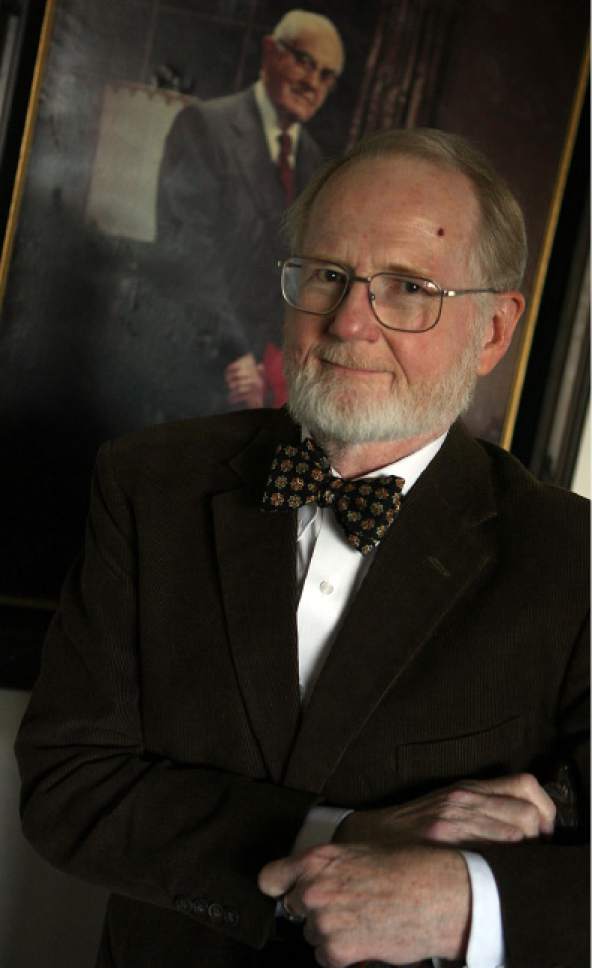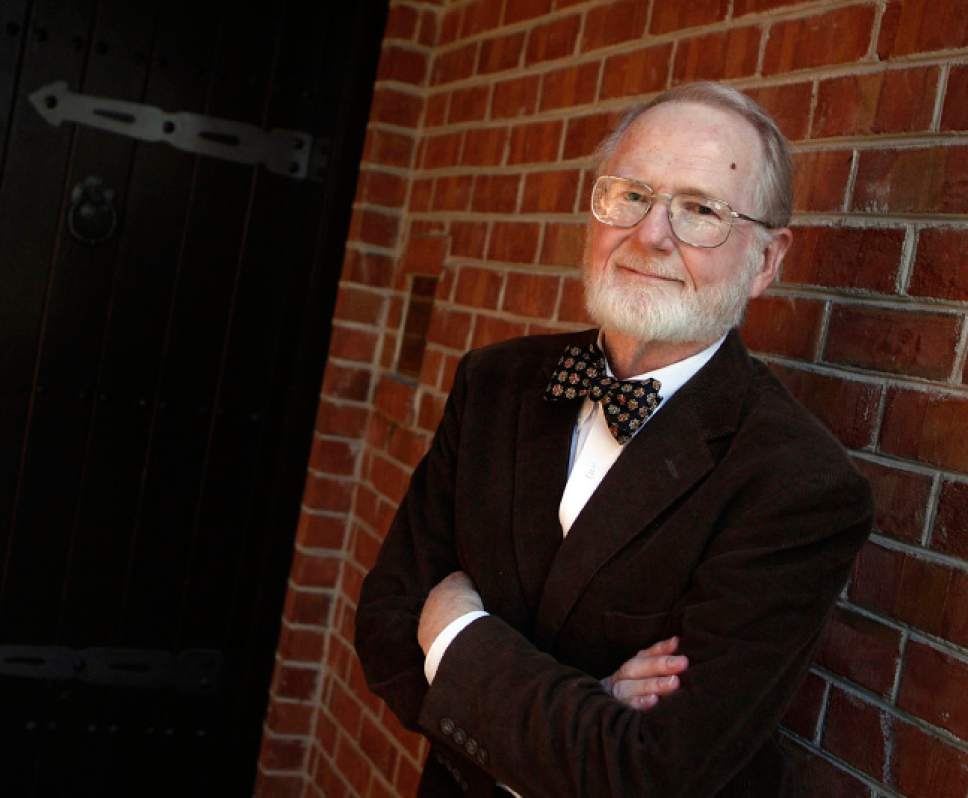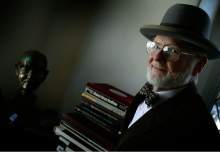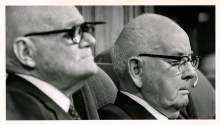This is an archived article that was published on sltrib.com in 2016, and information in the article may be outdated. It is provided only for personal research purposes and may not be reprinted.
Without the work of Edward L. Kimball, few Mormons would know the details of the groundbreaking 1978 revelation that changed the course of their faith's history.
It was Kimball who penned candid and meticulously researched biographies of his father, the late LDS Church President Spencer W. Kimball, who ended a centurylong ban on black men and boys being ordained to the all-male priesthood.
Edward Kimball, an intellectual heavyweight himself, died Monday in Provo. He was 86.
Reared in a prominent Mormon family — in addition to his father, the 12th president of The Church of Jesus Christ of Latter-day Saints, his mother was Camilla Eyring and his cousin is current LDS First Presidency member Henry B. Eyring — Kimball served a full-time mission to the Netherlands. After his return, he married Evelyn Bee Madsen (she died in 2012) and together they had seven children. He earned multiple law degrees and was twice called to lead a Mormon congregation as bishop, a lay clergy position.
He was, Kimball wrote in his own obituary, a teacher at heart. During his 40-year career, he taught at universities in Montana and Wisconsin in addition to LDS Church-owned Brigham Young University, focusing on criminal law, trial and legal ethics. In Wisconsin, he was named to a special parole board for sex offenders. Later, in Utah, he served again on a parole board.
"Childhood polio made his walk awkward and also made him shy, though few perceived that," Kimball wrote of himself. "More people mistakenly thought him aloof."
But Kimball also was deeply compassionate, capable of complex thinking about human nature and actions, his son Christian Kimball said Monday.
"Dad saw three-dimensional people," Chris Kimball said. "He did it in serving on the parole board (which has an enhanced role because Utah uses indeterminate sentencing, where the court determines the type or degree of felony, each of which comes with a time range, and the parole board determines the actual time for the individual case). He did it in serving as a bishop. He did not categorize or label people (and in that he and my mother were opposites, so I know the difference). He saw individuals and in some cases told their story."
This skill was particularly helpful, his son said, in the writing of Mormon history.
"My father wanted to make a difference in the world of Mormon history and biography," Chris Kimball said, "by breaking the mold of hagiography."
Edward Kimball did that by writing the first volume of Spencer Kimball's life (with his nephew Andrew Kimball), while the LDS prophet was still alive and gave him permission to "make it real."
That warts-and-all book ended, in 1977, just before the momentous decision to end the racial ban, a move that reshaped the Utah-based faith and propelled it into a global religion.
The second volume, "Lengthen Your Stride: The Presidency of Spencer W. Kimball," published in 2005 and written by Edward Kimball alone, drew on the late president's 33 journals, thousands of letters and scores of interviews with leaders and lay members who knew him.
It traces Spencer Kimball's leadership through key episodes in modern Mormonism — including the battle over the Equal Rights Amendment; dramatic escalation in missionary work; the beginning of satellite transmissions from church headquarters; growing concern about homosexuality, abortion and pornography; the document forgeries of "Mormon bomber" Mark Hofmann; the reportedly phony Howard Hughes will; and the church's opposition to the MX missile being bunkered in Utah.
"Lengthen Your Stride" — with an accompanying CD-ROM that contained additional information and footnotes — gave Mormons a rare peek behind the bureaucratic curtain that normally obscures such give-and-take among LDS leaders.
BYU Magazine called it a "gem of Latter-day Saint history," praising its depiction of the beloved prophet's strengths and flaws without "flinching" or "sanitizing."
In 2010, an expanded version of the book was issued and incorporated the extra material, including the tidbit that Spencer Kimball avoided repeated calls from ERA activist Sonia Johnson by working in the hall so his staff could honestly say he was "not in."
Edward Kimball did not always agree with his father's approach, particularly the way the elder Kimball handled relations with son Spencer Jr.'s distance from the church or with some of the ideas his dad put forth in his landmark 1969 volume, "The Miracle of Forgiveness."
Indeed, wrote the son, "Miracle" was a book "more on sin and repentance than on forgiveness," and even his father "later seemed to wish he had adopted a gentler tone,"
Last year, with Edward Kimball's approval, Desert Book quietly discontinued its publication, 30 years after the late LDS leader's death in 1985.
But one of the son's more lasting contributions may be his exploration and explanations of the late president's approach to Mormon revelation.
"Revelations will probably never come unless they are desired. I think few people receive revelations while lounging on a couch," Spencer Kimball wrote to Edward Kimball several years before the 1978 experience. "I believe most revelations would come when a man is on his tiptoes, reaching as high as he can for something which he knows he needs, and then there bursts upon him the answer to his problems."
"You could call him a truth teller and I agree," said Chris Kimball. "He would appreciate that label, but he wouldn't use it about himself."
Edward Kimball, a kind and self-effacing dad, would have described what he did "as normal, correct, obvious ... wondering how it could be otherwise."
Details about services have not been finalized.
Twitter: @religiongal









